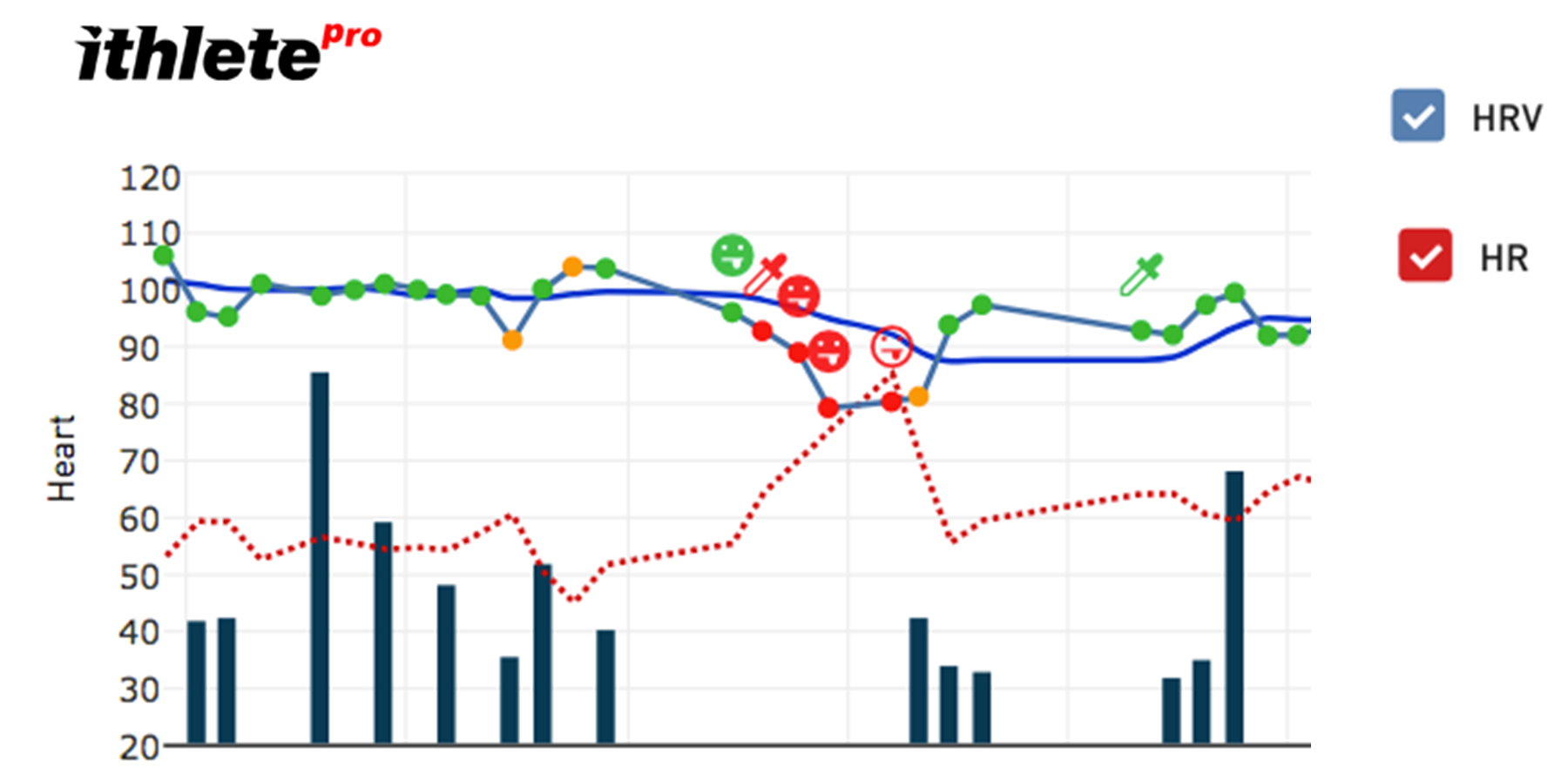Most athletes, whether recreational, committed amateur or elite, log training metrics in order to track their improvement. Furthermore, many record wellness metrics, work/recovery metrics like TSB, resting heart rate, and the list goes on…
This is already a fair amount of work, so why add an HRV to the pile? By directly accessing the parasympathetic branch of the nervous system, HRV serves as an early indicator of:
- Viral and bacterial illness
- Non-functional overreaching
- Adaptation to given training loads, indicating under-stimulation as well as overload
- Total (life) stress load
These variables can help you decide whether your athlete is ready for another HIIT session on their calendar or whether they need a bit more recovery time.
What is Heart Rate Variability (HRV)?
HRV is the measurement of beat-to-beat variation in heart rate. Contrary to what you might expect, your heart rate actually varies a lot when at rest, and especially as you breathe in and out.
Research has shown HRV to be a valid and reliable predictor of the autonomic nervous system, which controls the body’s ‘fight or flight’ (sympathetic) vs. ‘rest and digest’ (parasympathetic) state. Unlike resting heart rate, high HRV is generally better. High HRV is associated with high levels of fitness and resilience, whilst low levels are associated with stress, fatigue, and burnout.
Factors that influence an individual’s HRV include age, genetics, mental & emotional stress, physical activity (especially intense training), alcohol, drugs, and nutrition.
How is HRV measured?
An athlete can measure their HRV by using a simple 1 min test upon waking. For the most accurate pattern tracking, aim for 4 – 7 mornings per week. They should use a validated HRV sensor such as a Bluetooth chest strap or the ithlete finger sensor. Although activity wristwatches can measure HR during exercise reasonably well, they are not yet considered accurate enough for measuring each beat precisely, as is required for HRV.
Generally speaking, higher HRV compared to your ‘personal baseline’ or moving average is good, and indicates sufficient recovery, whereas lower HRV reflects stress and compromised recovery status.
There are exceptions, though. Continuous intense training and competition can push through the reduced HRV stage to an exhausted state, where the body puts its ‘parasympathetic brakes on’ to prevent further damage. This state results in much higher HRV and lower resting HR than usual. Conversely, a lower HRV and higher resting HR on race day usually reflect pre-competition nerves and are unlikely to affect your performance.
Increases in the HRV baseline during de-loading or taper weeks often reflect positive adaptation, leading to higher performance levels.
What can HRV tell you about your athlete’s physical state?
- HRV is responsive to multiple types of stress and is an excellent holistic measure of the total load.
- HRV is a highly sensitive indicator of oncoming viral and bacterial illnesses. There are many reports of athletes seeing unusually low HRV readings in their morning readings preceding the onset of new respiratory tract infections.
- Many illnesses and some injuries trigger the body’s inflammatory response as it activates the immune system. HRV measures parasympathetic activity, which has recently been shown to be directly involved in the inflammatory response.

In the above image, the emojis show when this athlete started to feel unwell, and their HRV fell rapidly at the start of the illness. Significantly, their resting heart rate only rose above its normal range on the third day after the illness had begun. Generally speaking, HRV is a more sensitive and faster-acting indicator because it taps directly into the nervous system.
On the sixth day after the illness began, the daily HRV measurement turned from red to orange, and the athlete began training again with a light load for the next 3 days as they felt better.
The number and depth of metrics coaches and athletes are expected to track these days can be overwhelming. But if you’re looking to ensure that your athlete doesn’t end up digging themselves into an overreaching or illness-related hole, HRV will help you stay on top of their physiological responses.







